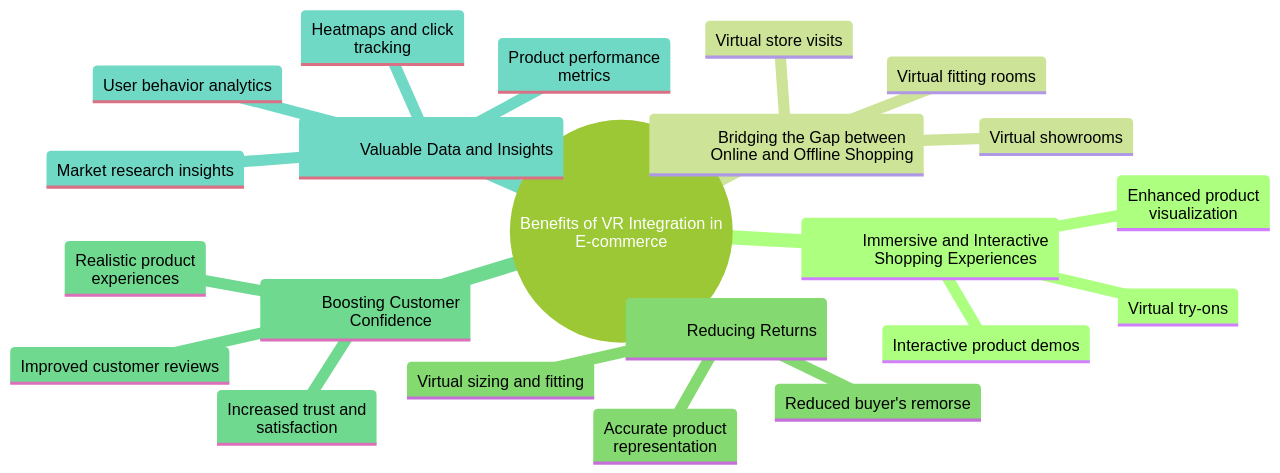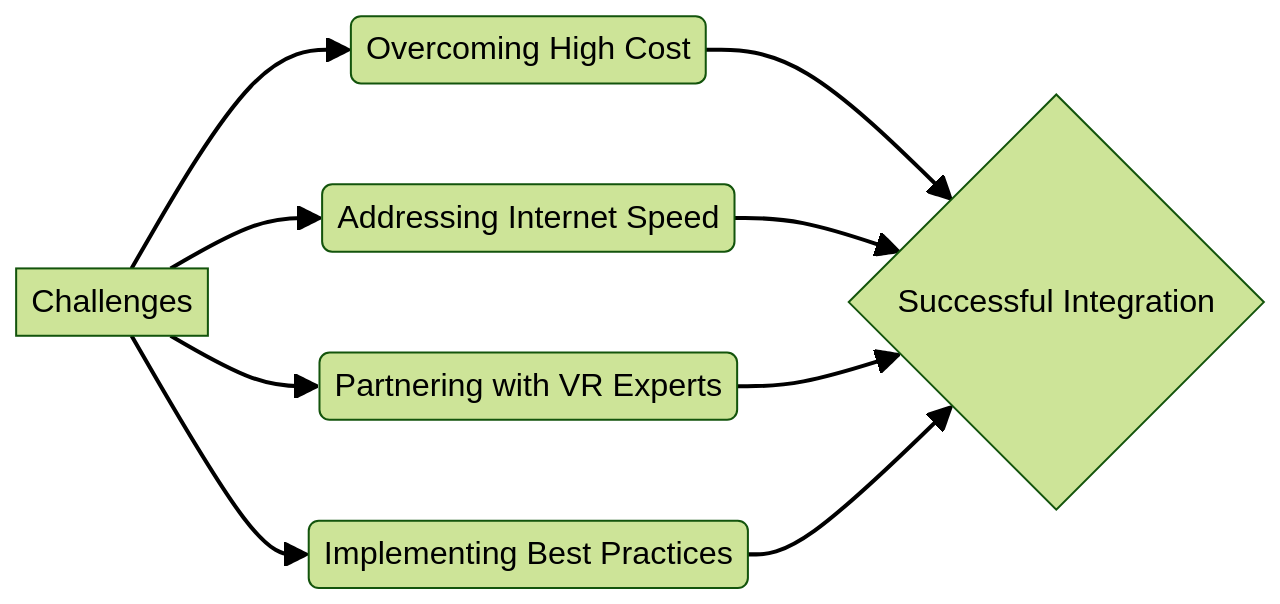Introduction
The fusion of e-commerce and virtual reality (VR) is revolutionizing the online shopping experience. With VR technology, customers can virtually try on outfits, explore 3D models of furniture, and even stroll through virtual stores, all from the comfort of their homes. This level of interactivity and immersion enhances the user experience, making online shopping more engaging and enjoyable. In this article, we will delve into the intersection of e-commerce and VR, exploring successful implementations, benefits, challenges, and future prospects. By leveraging the expertise of VR specialists like BestToolbars, businesses can integrate VR into their e-commerce platforms and provide immersive shopping experiences for their customers.
The integration of VR into e-commerce platforms offers immense potential for enhancing the customer experience and driving sales. Customers can virtually explore products, visualize how they would look in real life, and make informed purchasing decisions. Platforms like Shopify, Magento, WooCommerce, and BigCommerce have successfully incorporated VR through plugins or integrations. However, implementing VR in e-commerce comes with its own set of challenges, such as ensuring a seamless and immersive experience and creating realistic virtual environments. By partnering with VR technology experts, businesses can overcome these challenges and leverage the power of VR to revolutionize the online shopping landscape. The future of VR in e-commerce looks promising, with its potential to create immersive, interactive experiences that bridge the gap between online and offline shopping.
1. Understanding the Intersection of E-commerce and Virtual Reality
The fusion of e-commerce and virtual reality (VR) is ushering in a new era of online shopping. VR technology, with its immersive and interactive capabilities, has the potential to redefine the e-commerce landscape. Customers can now virtually try on outfits, inspect 3D models of furniture, or stroll through a virtual store, all within the confines of their home. This high level of interactivity and immersion can greatly enrich the user experience, making online shopping more engaging and enjoyable. Pioneers in this field, such as BestToolbars, are utilizing their expertise in custom web and mobile app development to integrate VR into e-commerce platforms.
Discover how BestToolbars can help integrate VR into your e-commerce platform.
Many e-commerce platforms have successfully integrated VR into their systems, offering a more immersive and interactive shopping experience. Users can virtually explore products, visualize how they would look in real life, and make informed purchasing decisions. Shopify, Magento, WooCommerce, and BigCommerce are some of the platforms that have successfully incorporated VR through plugins, extensions, or integrations.

Integrating VR into e-commerce websites can enhance the user experience and provide a more immersive shopping environment.

However, to ensure successful integration, it is essential to have a user-friendly design, high-quality visuals, smooth performance, mobile compatibility, and a well-tested and feedback-driven system.
VR technology offers several benefits in e-commerce. It provides an immersive and interactive shopping experience, bridges the gap between online and offline shopping, reduces the likelihood of returns, and boosts customer confidence.

VR can be used to create virtual showrooms or virtual fitting rooms, enabling customers to try on clothing or test out products virtually, saving time and effort.
However, implementing VR in e-commerce comes with its own set of challenges.

These include ensuring a seamless and immersive VR experience, creating realistic virtual environments and product representations, and having a robust backend infrastructure to handle the increased data load and processing requirements. To overcome these challenges, businesses can partner with VR technology experts who specialize in e-commerce solutions.
In conclusion, VR technology has the potential to revolutionize the e-commerce industry by enhancing the customer experience and driving sales. By leveraging the expertise of VR specialists, businesses can successfully integrate VR into their e-commerce platforms and provide immersive shopping experiences for their customers.
2. The Potential Impact of Virtual Reality on Online Shopping
Virtual reality (VR) technology is transforming the online shopping landscape by creating a more immersive and interactive environment for customers. With VR, customers can virtually navigate through store aisles, browse products, and even try them on virtually. This enhanced product visualization and understanding can lead to more confident purchasing decisions, which in turn, increases conversion rates and reduces return rates.
The integration of VR into online shopping can also enhance personalization and customer engagement. Customers can customize their virtual shopping environment to match their preferences, and receive tailored product recommendations based on their browsing and purchasing history. This level of personalization can significantly enhance customer satisfaction and loyalty, leading to the long-term growth of e-commerce businesses.
Moreover, VR solutions can significantly reduce return rates. By providing customers with a more immersive and realistic shopping experience, VR allows them to visualize products in a more accurate and detailed manner. This helps customers better assess factors such as size, color, and design, reducing the likelihood of returns due to unmet expectations.
The integration of VR into online shopping not only improves the shopping experience but also provides valuable data and insights into customer preferences and behavior. These insights can inform marketing and product strategies, further driving sales and growth for e-commerce businesses.
To implement VR in online shopping, it's crucial to leverage the expertise of software developers, designers, and engineers.
These professionals can craft tailored solutions that cater to the specific needs and questions of the online shopping platform. Through one-on-one consultations with experts, businesses can gain valuable insights and guidance on how to effectively integrate VR into their e-commerce strategies.
3. Case Studies: Successful Implementations of VR in E-commerce
The successful integration of VR in e-commerce platforms is a testament to the transformative potential of this technology. Companies such as IKEA and Alibaba have leveraged VR to provide a more immersive and interactive shopping experience. IKEA's VR app, for instance, allows customers to explore kitchen designs in a virtual environment, changing cabinet colors and swapping appliances. Alibaba, on the other hand, has created a virtual mall where customers can browse products.
These successful implementations underscore the importance of involving software developers, designers, and engineers in crafting VR solutions tailored to specific platform needs. Collaborating with experienced professionals such as BestToolbars' team, including Oleg Grebenyuk, Nik Gavrilov, Tom Straszewski, and Chris Ashbaugh, can provide access to top-tier talent and insights on cost-effective and flexible ways to incorporate VR.
Moreover, VR technology is not only about enhancing visual experiences but also about providing customers with a sense of presence that traditional online shopping cannot replicate. The ability to interact with products, such as trying on virtual clothing or testing out virtual furniture, increases customer engagement and confidence in purchasing decisions.
When implementing VR, it's crucial to ensure a seamless, user-friendly experience. This involves optimizing navigation, providing high-quality visuals, integrating VR with other e-commerce features, and continually testing and iterating on the VR implementation. By adhering to these best practices, e-commerce platforms can effectively utilize VR to provide immersive and engaging shopping experiences, driving customer satisfaction and sales growth. The future of VR in e-commerce looks promising, with its potential to revolutionize online shopping through immersive, interactive experiences.
4. Overcoming Challenges in Integrating VR into E-commerce Platforms
As the e-commerce landscape evolves, VR has emerged as a game-changer, albeit with its set of challenges. One of the hurdles is the high cost of VR technology, posing a barrier for many businesses. However, this barrier is expected to decrease over time due to technological advancements and cost-effective options. Businesses can optimize the use of VR technology in specific areas of the e-commerce process, focusing on key touchpoints where VR can have the greatest impact. This targeted approach helps in cost reduction while providing a valuable VR experience to customers.
Another challenge is the need for high-speed internet connections due to the data-intensive nature of VR. This is particularly a hurdle in regions with limited internet infrastructure. However, with the ongoing rollout of 5G technology, this issue is also expected to be mitigated.
To overcome these challenges, companies like BestToolbars can be instrumental by leveraging their expertise in custom web and mobile app development.
Partner with BestToolbars to overcome challenges and integrate VR into your e-commerce platform.
They can integrate VR into e-commerce platforms in a cost-effective and efficient manner. They offer one-on-one consultations with experts in the field, access to top-tier talent, and cost-effective solutions, including on-demand contractors to speed up development and reduce costs.
Moreover, they focus on creating a seamless and immersive VR environment for users. This includes ensuring high-quality graphics, smooth performance, intuitive and user-friendly navigation, and optimized load times. User testing sessions and feedback collection are integral parts of their process, aimed at continuous improvement of the VR experience. By following these practices, BestToolbars can successfully integrate VR into your e-commerce platform, providing customers with an immersive and engaging shopping experience.
5. Future Prospects: How VR Could Shape the Future of E-commerce
As VR technology evolves and becomes more accessible, its integration into e-commerce platforms is expected to amplify. VR's potential for creating immersive shopping experiences opens up innovative ways for businesses to engage with their customers. Virtual showrooms, tours of facilities, and shopping events are just a few examples of how VR can be utilized.
Platforms like Shopify, Magento, and WooCommerce are already leveraging VR technology, providing immersive shopping experiences where customers can virtually try on products or visualize them in their space. The use of VR headsets or even a simple smartphone with a VR viewer can create these experiences.
Virtual tours using VR in e-commerce should be seamless, user-friendly, and equipped with high-quality visuals and realistic 3D models. Incorporating interactive elements such as hotspots or clickable objects can further engage users. Thorough testing across different devices and platforms ensures compatibility and optimal performance for all users.
Virtual shopping events can be hosted using VR technology to create an immersive and interactive shopping experience, allowing customers to browse and make purchases in a virtual environment. This experience can be enhanced with interactive features such as virtual try-ons or product demonstrations.
VR technology has also facilitated the emergence of new business models in e-commerce, such as virtual marketplaces. Customers can explore virtual stores, try on products virtually, or even visualize how products will look in their own homes. Businesses can engage with customers and provide unique shopping experiences from anywhere in the world.
To monetize premium VR shopping experiences, businesses can offer exclusive VR experiences to premium customers or partner with brands to create sponsored experiences. Integrating in-app purchases or virtual currency systems can also provide opportunities for monetization.
Partnerships between businesses and VR content creators can enhance e-commerce platforms by offering immersive and interactive experiences. These partnerships can drive customer engagement and increase sales, benefiting both parties.
As VR technology continues to improve, we can expect to see more immersive and realistic virtual shopping experiences. The future of VR in e-commerce looks promising, with the potential to revolutionize the way people shop online.
Conclusion
In conclusion, the fusion of e-commerce and virtual reality (VR) has the potential to revolutionize the online shopping experience. By leveraging VR technology, customers can virtually try on outfits, explore 3D models of furniture, and even stroll through virtual stores, all from the comfort of their homes. This level of interactivity and immersion enhances the user experience, making online shopping more engaging and enjoyable. Successful implementations of VR in e-commerce platforms, such as Shopify, Magento, WooCommerce, and BigCommerce, have demonstrated the benefits of integrating VR into online shopping. However, challenges such as ensuring a seamless and immersive VR experience and creating realistic virtual environments need to be overcome. By partnering with VR technology experts like BestToolbars, businesses can navigate these challenges and provide immersive shopping experiences for their customers.
Looking ahead, VR has the potential to shape the future of e-commerce in exciting ways. Virtual showrooms, tours of facilities, and interactive shopping events are just a few examples of how businesses can utilize VR to engage with customers. The integration of VR into e-commerce platforms can enhance personalization and customer engagement while reducing return rates. Furthermore, VR technology provides valuable data and insights into customer preferences and behavior that can inform marketing strategies. As VR technology becomes more accessible and advanced, we can expect to see more immersive and realistic virtual shopping experiences that bridge the gap between online and offline shopping. To stay ahead in this evolving landscape, businesses should leverage the expertise of VR specialists like BestToolbars to integrate VR into their e-commerce strategies.





